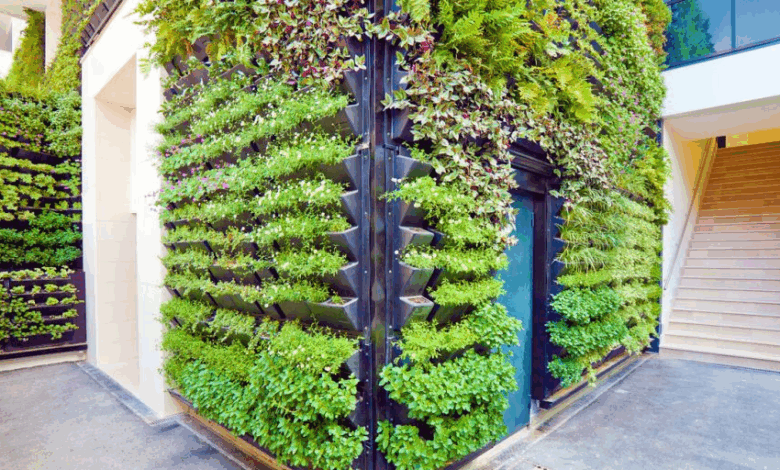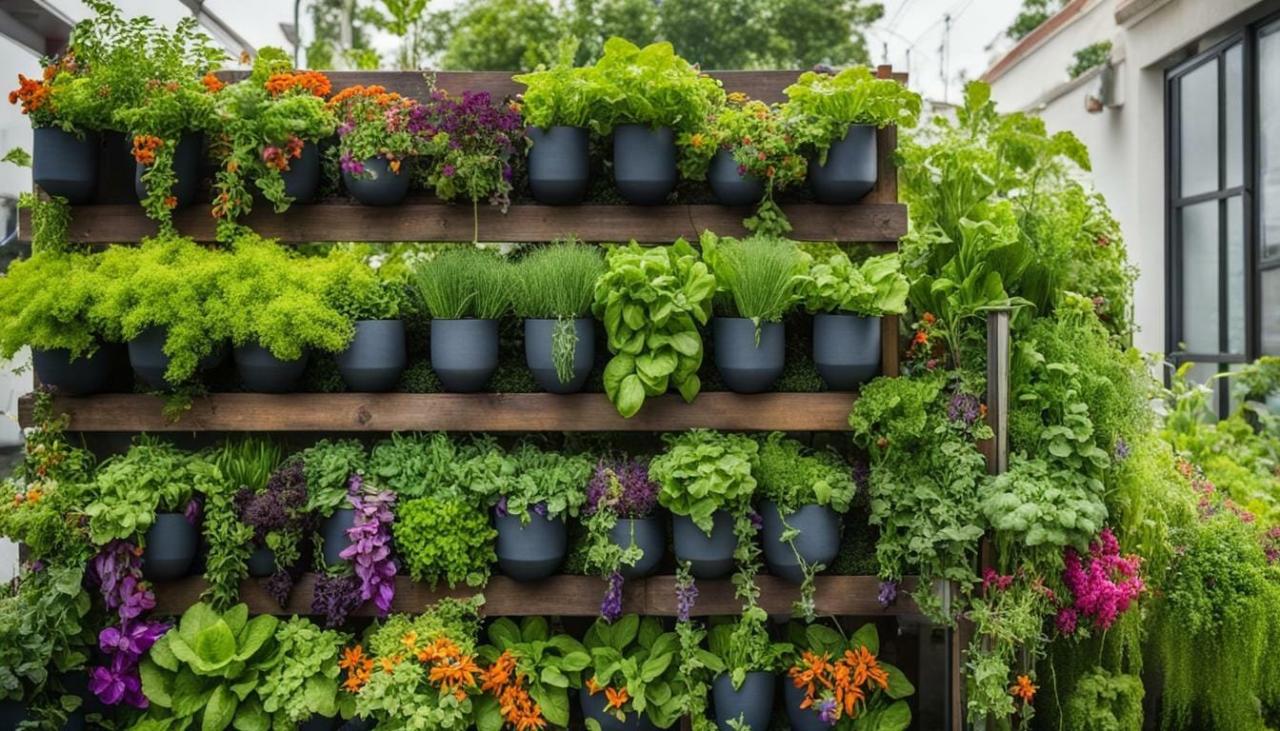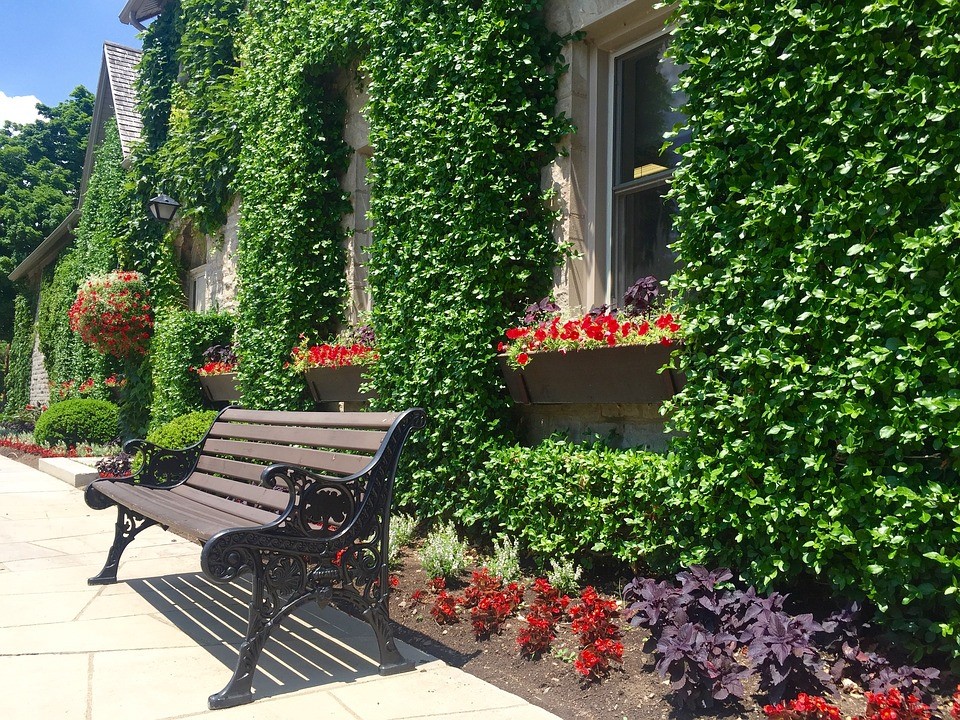Urban Vertical Gardens Turn Spaces into Beautiful Spots

As our cities become more dense and the global population continues to grow, the traditional concept of a sprawling garden is giving way to a new, more sustainable, and innovative solution: urban vertical gardens. This isn’t just about a few potted plants on a balcony; it’s a profound architectural and ecological movement that is fundamentally reshaping our urban landscapes. Vertical gardens are living walls, facades, and roofs that integrate vegetation into the very fabric of a building, turning a sterile concrete wall into a vibrant, living ecosystem. This article will take a deep dive into the core concepts of urban vertical gardens, exploring the pivotal role of advanced technology, the myriad of environmental and human health benefits, the challenges that still need to be addressed, and the immense opportunities that lie ahead for a greener, more sustainable, and more livable urban future.
The New Green Space

The urban vertical garden is a direct response to the limitations of traditional urban green spaces. In a dense city, where land is a precious and expensive commodity, a vertical garden offers a way to bring a massive amount of greenery into a city’s design without taking up a single square inch of valuable land. This is a powerful and efficient way to green our cities and to create a more harmonious relationship between the built and natural environments.
A. The New Urban Ecosystem
A vertical garden is more than just a collection of plants; it’s a new urban ecosystem. It is a living, breathing wall that can support a wide range of plant species and a variety of insects and birds. This is a crucial component of a smart, sustainable city, as it can help to restore a city’s biodiversity and to create a more resilient and healthy ecosystem.
- A Habitat for Urban Wildlife: A vertical garden can provide a new habitat for urban wildlife, from bees and butterflies to a variety of native bird species. This is a crucial step toward restoring a city’s biodiversity and creating a more resilient ecosystem.
- A Natural Air Purifier: The plants in a vertical garden are natural air purifiers. They can absorb carbon dioxide and a wide range of harmful pollutants from the air, which can significantly improve a city’s air quality and reduce the risk of respiratory illnesses.
- A Natural Insulator: A vertical garden is a natural insulator. It can provide a new layer of thermal insulation for a building, which can reduce the amount of energy needed for heating and cooling. This can dramatically reduce a building’s energy bill and its carbon footprint.
B. The Power of Advanced Technology
The new era of urban vertical gardens would not be possible without a new generation of advanced technology. The systems that power these living walls are a marvel of engineering, a creative fusion of nature, technology, and a deep understanding of plant biology.
- Smart Irrigation Systems: A vertical garden requires a precise and efficient irrigation system. The new generation of smart irrigation systems can use a variety of sensors to monitor a plant’s moisture levels and to automatically adjust the amount of water it receives. This can conserve a significant amount of water and reduce a garden’s water consumption.
- Hydroponics and Aeroponics: The use of hydroponics, a system of growing plants without soil, and aeroponics, a system of growing plants in a mist of nutrient-rich water, is a key component of a vertical garden. These systems are incredibly water-efficient and can provide a controlled environment for a plant to grow in.
- The Power of AI: Artificial intelligence is being used to monitor a vertical garden’s health, from its light levels and nutrient intake to the onset of a pest infestation. This allows a gardener to take a proactive rather than a reactive approach to a garden’s health, ensuring that the garden is as healthy and as vibrant as possible.
A New Focus on Wellness
The new era of urban vertical gardens is not just about a city’s environment; it’s about a city’s people. A growing body of scientific research is proving that a connection to nature is not a luxury but a biological imperative that can have a profound impact on our physical and mental health.
A. The Health Benefits
The integration of natural elements into our homes and workplaces has a direct and measurable impact on our health.
- Stress Reduction: Studies have shown that exposure to nature, even in a simulated form, can significantly reduce stress levels. The sight of a green wall, the sound of running water, or the feeling of natural light can lower a person’s heart rate, blood pressure, and cortisol levels.
- Cognitive Function: A connection to nature has been shown to improve cognitive function, including memory, focus, and creativity. A person who works in a biophilic environment is more likely to be more productive and to have a higher level of job satisfaction.
- Physical Well-being: The use of natural light and natural ventilation in a biophilic building can improve a person’s physical health, from a reduction in eye strain and headaches to a lower risk of respiratory illnesses.
By designing a building that is in harmony with nature, we are designing a building that is in harmony with human biology.
B. The Psychological Impact
Beyond the physical, a vertical garden has a profound psychological impact, providing a sense of comfort, a feeling of security, and a connection to something larger than ourselves.
- A Sense of Place: The use of a vertical garden in a building’s design can create a sense of place and a feeling of belonging. It connects a building to its surrounding landscape and to the cultural history of a region.
- A Connection to the Cycle of Life: A vertical garden is a living, breathing ecosystem. The use of natural light, natural ventilation, and indoor plants creates a connection to the cycle of life, a feeling of being a part of something larger than ourselves.
- A Feeling of Awe: The use of a natural vista, a large window with a view of a garden, or a large, open atrium with natural light can create a feeling of awe and a sense of wonder. This can have a powerful, positive impact on a person’s mental health.
The Road Ahead

While the future of urban vertical gardens is bright, there are significant challenges that must be addressed to ensure that this revolution is inclusive and sustainable.
A. The Cost of Implementation
The cost of a vertical garden, particularly a large-scale one on a building’s facade, can be prohibitive. The components that power these gardens are expensive, creating a new digital divide between cities that can afford a green infrastructure and those that cannot. The use of modular and prefabricated components is a major step toward addressing this, but more work is needed to make a vertical garden accessible to every city.
B. The Evolving Legal and Regulatory Framework
The new era of urban vertical gardens is advancing faster than the laws that govern it. New regulations are urgently needed to address a wide range of issues, from the legal status of a vertical garden to the rights of a building’s occupants. The lack of a clear regulatory environment is a major barrier to adoption for many developers and cities.
C. The Human Element
A city is, at its core, a place for people. While technology can solve many problems, it cannot replace the human element of empathy, community, and social connection. The challenge is to use technology to enhance human interaction, not to replace it. Urban planning must be human-centric, creating spaces that foster community and belonging.
Conclusion
The rise of urban vertical gardens is not a passing trend but a powerful and transformative movement that is fundamentally reshaping our relationship with our built environment and with nature. It is a testament to the growing awareness from both architects and urban planners that a greener future is not just an ethical imperative but a business necessity. The use of advanced technology, a new focus on sustainability, and the integration of a new generation of smart technology are all a part of this new era. The new era of urban vertical gardens is a clear signal that the future of building is a new kind of living, a living that is as adaptable and as resilient as it is intelligent and sustainable.
However, as we embrace this new era, we must also confront the significant challenges that lie ahead. The high cost of a vertical garden, the need for a new legal and regulatory framework, and the challenges of data privacy and security are all hurdles that must be addressed proactively. The future of urban vertical gardens is a journey that will be defined not just by its technological prowess but by its ability to create a world that is more connected, more human-centric, and more conducive to a person’s overall well-being. The urban vertical garden is here, and it promises to build a future where our cities are as healthy and as happy as we are.
